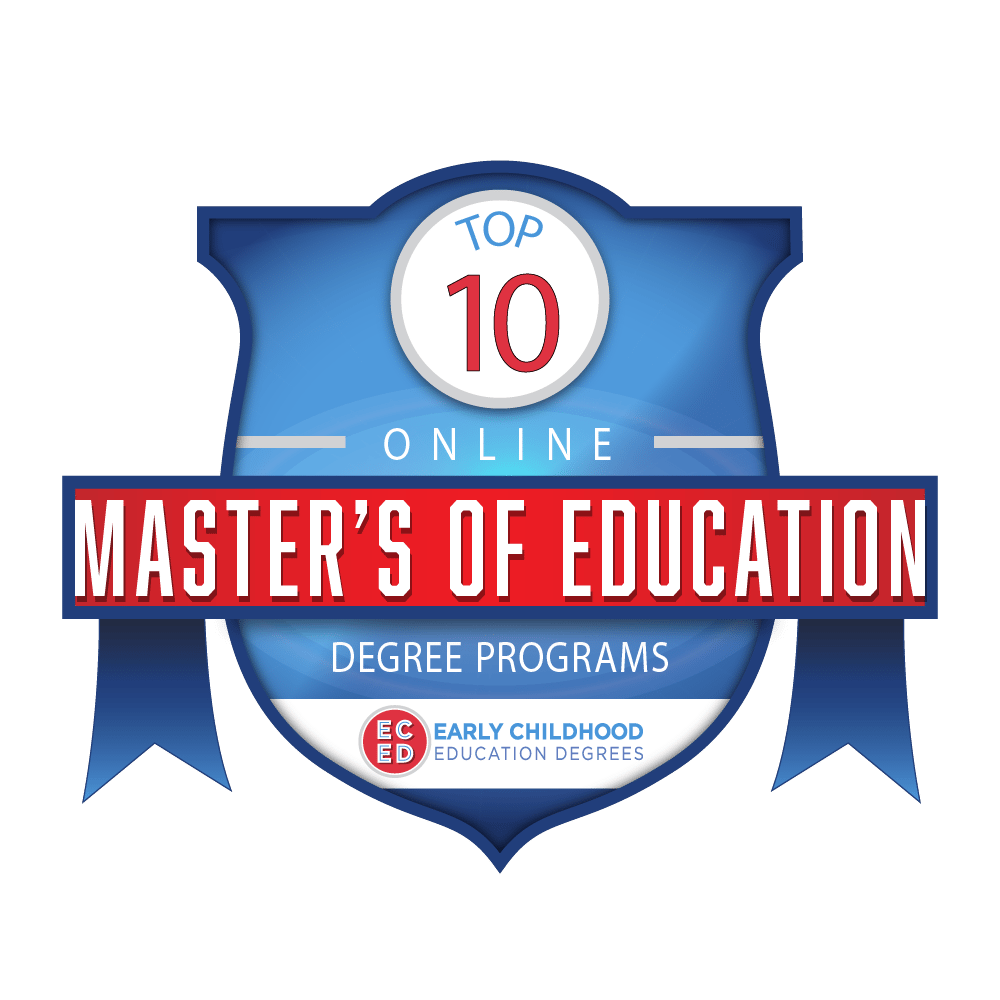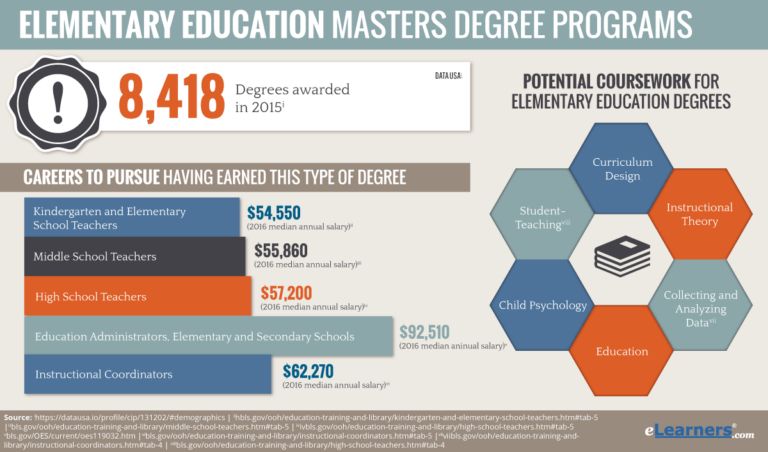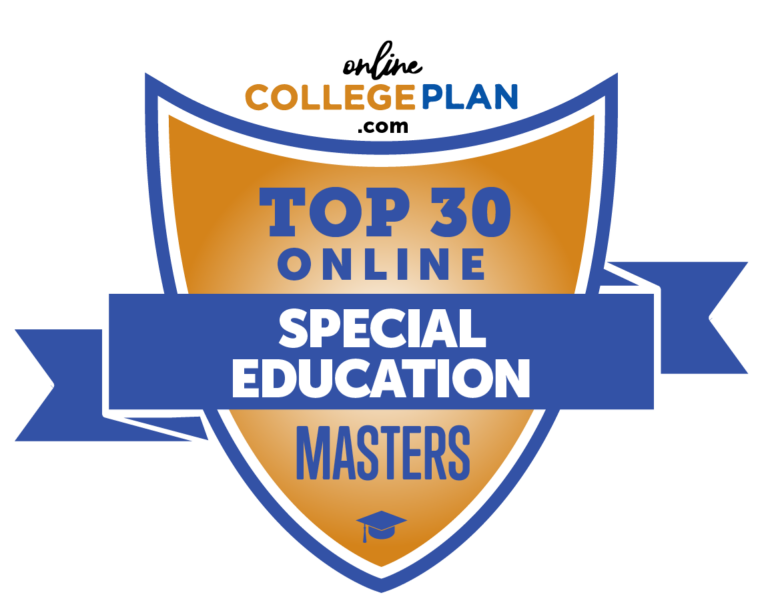Online Masters In Education programs are transforming the landscape of education, offering flexible and accessible pathways to advanced degrees. This burgeoning field provides opportunities for career advancement, skill enhancement, and a deeper understanding of pedagogical practices. We’ll explore the curriculum structures, admission processes, technological aspects, career prospects, financial considerations, and accreditation standards of these increasingly popular programs, giving you a comprehensive overview to help you make an informed decision about your future.
From understanding the diverse curriculum offerings across various universities to navigating the application process and exploring different learning technologies, this guide aims to demystify the world of online Master’s in Education. We will delve into the career paths available to graduates, discuss financial aid options, and provide insights into ensuring you choose a high-quality, accredited program.
Program Structure & Curriculum

Online Master’s in Education (MEd) programs offer a flexible path to advanced education credentials, but their structure and curriculum can vary significantly. Understanding these variations is crucial for prospective students to choose a program that aligns with their career goals and learning style.
A typical online MEd program follows a structured curriculum, generally broken down into core courses, specialization tracks, and a culminating project or thesis. Core courses cover foundational topics in educational theory, research methods, and curriculum development. Specialization tracks allow students to focus their studies on specific areas like curriculum and instruction, educational leadership, special education, or technology in education.
The culminating project provides an opportunity to apply learned knowledge to a real-world educational problem or to conduct original research.
Curriculum Variations Across Universities
The specific courses and emphasis within an online MEd program can differ considerably between universities. Some programs may prioritize theoretical frameworks, while others may focus more on practical applications and skills development. For instance, one university might offer a strong emphasis on quantitative research methods, while another might focus on qualitative approaches. Similarly, specialization tracks vary; one institution might offer a strong special education track, while another might focus on educational technology.
These variations reflect the unique strengths and research interests of the faculty at each university. Choosing a program requires careful consideration of these differences and alignment with individual career goals.
Typical Course Load and Time Commitment
Most online MEd programs require the completion of 30-36 credit hours, typically spread over 18-24 months of part-time study or 12-18 months of full-time study. The exact course load varies based on the program’s structure and the student’s chosen specialization. A typical course load might involve 1-2 courses per semester, each requiring approximately 6-8 hours of work per week, including reading assignments, discussions, and assignments.
This translates to a weekly time commitment ranging from 6 to 16 hours, depending on the intensity of the courses and the student’s learning pace. Students should be prepared for a significant time commitment, even in part-time programs.
Sample Weekly Schedule for an Online MEd Student
The following table provides a sample weekly schedule for a student enrolled in an online MEd program taking two courses, Educational Psychology and Curriculum Design. This is just an example, and individual schedules will vary based on course requirements and personal learning styles.
| Day | Time | Activity | Course |
|---|---|---|---|
| Monday | 7:00 PM – 8:30 PM | Readings and online lectures | Educational Psychology |
| Tuesday | 6:00 PM – 7:30 PM | Discussion forum participation | Curriculum Design |
| Wednesday | 7:00 PM – 9:00 PM | Assignment work (essay) | Educational Psychology |
| Thursday | 6:00 PM – 8:00 PM | Readings and assignment preparation | Curriculum Design |
| Friday | 8:00 AM – 10:00 AM | Review and revision of assignments | Both Courses |
| Saturday | 9:00 AM – 12:00 PM | Independent research and project work | Both Courses |
| Sunday | 2:00 PM – 4:00 PM | Assignment submission | Both Courses |
Admission Requirements & Application Process
Getting into an online Master’s in Education program involves navigating a specific set of requirements and a structured application process. Understanding these elements is crucial for a successful application. This section Artikels the typical expectations and provides a clear roadmap to guide you through the process.
Generally, online Master’s in Education programs require a bachelor’s degree from a regionally accredited institution, a minimum GPA (often 3.0 or higher), official transcripts, letters of recommendation, and a statement of purpose. Some programs may also require standardized test scores like the GRE or GMAT, though this is becoming less common. Specific requirements vary by institution and program, so carefully reviewing the program’s website is essential.
The application process itself is typically completed online through a portal, and involves submitting all required materials electronically.
Typical Admission Requirements
A successful application hinges on meeting the program’s specific criteria. These typically include a bachelor’s degree, a minimum GPA, official transcripts, letters of recommendation from individuals who can speak to your academic abilities and professional experience, and a compelling statement of purpose that articulates your goals and suitability for the program. Some programs may require relevant professional experience or specific coursework prerequisites.
Finally, submission of all required documents within specified deadlines is crucial.
Step-by-Step Application Process
The application process is usually straightforward, but organization is key. Follow these steps to ensure a smooth application:
- Research Programs: Identify programs aligning with your career goals and learning style. Consider factors like program length, cost, faculty expertise, and online learning platform.
- Check Requirements: Carefully review each program’s specific admission requirements, including GPA, test scores (if required), and application deadlines.
- Gather Documents: Collect all necessary documents, including transcripts, letters of recommendation, and your statement of purpose. Ensure all documents are in the correct format and meet the specified requirements.
- Complete the Application: Fill out the online application form accurately and completely. Double-check all information for accuracy before submitting.
- Submit Application: Submit your application well before the deadline to allow for any unforeseen issues.
- Follow Up: After submitting, keep track of the application status and follow up with the admissions office if needed.
Required Documents
The following documents are commonly required for online Master’s in Education applications. Be prepared to provide accurate and complete information for each document.
- Official Transcripts: Request official transcripts directly from your undergraduate institution(s).
- Letters of Recommendation: Request letters from professors, supervisors, or mentors who can attest to your academic abilities and professional qualities.
- Statement of Purpose: This essay is crucial. It should clearly articulate your educational goals, relevant experiences, and reasons for pursuing a Master’s in Education.
- Resume/CV: A well-structured resume or curriculum vitae highlighting your education, experience, and accomplishments.
Examples of Successful Application Essays
A strong statement of purpose demonstrates your passion for education, articulates your career goals, and highlights relevant experiences that make you a suitable candidate. Here are some elements of a successful essay:
- Clear and Concise Writing: The essay should be well-written, grammatically correct, and easy to understand.
- Specific Examples: Use concrete examples from your experiences to illustrate your points and demonstrate your qualifications.
- Well-Defined Goals: Clearly state your career goals and how this program will help you achieve them.
- Personal Connection: Show your passion for education and your commitment to making a difference.
Example: “My experience teaching underprivileged students in [City/Region] ignited my passion for educational equity. This program’s focus on [Specific Program Focus] aligns perfectly with my desire to develop innovative teaching strategies to address the unique challenges faced by these students.” This is a simplified example; a successful essay will be much more detailed and specific.
Application Checklist
Before starting your application, use this checklist to ensure you’re fully prepared:
- Bachelor’s degree transcript(s)
- Letters of recommendation (contact referees in advance)
- Resume/CV
- Statement of purpose draft(s)
- GRE/GMAT scores (if required)
- Application fees (if any)
- List of references with contact information
- Notepad for tracking application deadlines
Learning Technologies & Online Learning Environment
Online Master’s in Education programs leverage a variety of technologies to create engaging and effective learning experiences. Successful programs understand that the online environment presents both unique opportunities and challenges compared to traditional classroom settings. This section will explore the key technologies, benefits, challenges, and platforms involved.
Learning Technologies Used in Online Master’s in Education Programs
A range of technologies support the delivery and enhancement of online Master’s in Education programs. These tools are designed to facilitate interaction, collaboration, and knowledge acquisition in a virtual setting. Common examples include learning management systems (LMS), video conferencing software, interactive simulations, and various assessment tools. These technologies are crucial for delivering a robust and engaging educational experience.
Benefits of Online Learning in Education
Online learning offers several advantages for students pursuing a Master’s in Education. The flexibility to learn at one’s own pace and schedule is a major draw, accommodating diverse lifestyles and professional commitments. Access to a wider range of courses and instructors, geographically unrestricted, expands learning opportunities significantly. Furthermore, online learning often incorporates innovative teaching methods and technologies, leading to a more engaging and interactive learning process.
For example, asynchronous learning allows students to access materials at their convenience, while synchronous sessions via video conferencing foster real-time interaction and collaboration.
Challenges of Online Learning in Education
Despite the advantages, online learning presents specific challenges. Maintaining student engagement and motivation requires careful course design and instructor facilitation. The lack of face-to-face interaction can sometimes hinder the development of strong student-teacher and peer relationships. Technical issues, such as unreliable internet access or software glitches, can disrupt the learning process. Furthermore, effective online learning necessitates strong self-discipline and time management skills from students.
For instance, a lack of structured study time can lead to procrastination and difficulties in completing coursework.
Comparison of Online Learning Platforms
Several platforms are commonly used for delivering online Master’s in Education programs. Each platform offers unique features and functionalities, influencing the overall learning experience. For example, Moodle is an open-source LMS known for its flexibility and customization options, while Canvas is a commercially available platform with a user-friendly interface and robust features. Blackboard, another popular choice, offers a comprehensive suite of tools for course management and communication.
The choice of platform often depends on the institution’s preferences and the specific needs of the program.
Design of an Online Learning Management System (LMS) Infographic
The infographic would visually represent the key features and functionalities of a typical LMS. The title, “Your Online Learning Hub,” would be prominently displayed at the top. A central image depicting a stylized computer screen displaying various LMS elements would serve as the focal point. Surrounding this central image, icons representing key features would be arranged: a calendar icon for scheduling, a chat bubble for communication tools, a book icon for course materials, a video camera icon for video lectures, a grading icon for assessment, and a group icon for collaborative activities.
Each icon would be linked to a short description of the corresponding feature. A color scheme of blues and greens would evoke a sense of calm and professionalism. The infographic would conclude with the institution’s logo and website address, reinforcing brand identity.
Career Prospects & Professional Development

An online Master’s in Education (M.Ed.) opens doors to a wide range of rewarding careers and significantly enhances professional development opportunities. This advanced degree demonstrates a commitment to excellence in the field, providing graduates with the skills and knowledge to excel in diverse educational settings and leadership roles. The impact extends beyond salary increases; it fosters professional growth and allows for greater influence within the educational community.Earning an online M.Ed.
equips individuals with advanced pedagogical knowledge, leadership skills, and specialized expertise in various educational areas. This translates to increased marketability and better prospects for career advancement within existing roles or transitions into more senior positions. For instance, a teacher with an M.Ed. might qualify for leadership positions like department head or curriculum coordinator, while a school administrator might pursue superintendent roles.
The specific career path will, of course, depend on the specialization chosen during the program.
Potential Career Paths for M.Ed. Graduates
An online M.Ed. prepares graduates for diverse roles within the education sector and beyond. These roles often require a blend of theoretical knowledge and practical experience, offering unique challenges and rewards. Graduates can find employment in various settings, including K-12 schools, higher education institutions, government agencies, and private organizations. Specific career paths are influenced by the chosen specialization within the M.Ed.
program.
Examples of Career Advancement with an M.Ed.
Many professionals leverage their M.Ed. to advance their careers. A teacher with a Bachelor’s degree might earn a promotion to a leadership position like instructional coach or curriculum developer after completing an M.Ed. Similarly, a school counselor might use their M.Ed. to specialize in a specific area like school psychology or college counseling, increasing their earning potential and professional impact.
In higher education, an M.Ed. can help instructors move into administrative roles or specialized teaching positions. These advancements often come with increased responsibilities and significantly higher salaries.
Salary Expectations for M.Ed. Graduates, Online Masters In Education
Salary expectations for M.Ed. graduates vary considerably depending on the specific role, location, experience, and the graduate’s specialization. For example, a school principal typically earns more than a classroom teacher, and a higher education administrator’s salary often exceeds that of a K-12 administrator. Geographic location also plays a significant role; salaries in high-cost-of-living areas tend to be higher. While precise figures are difficult to pinpoint due to these variations, the additional earning potential associated with an M.Ed.
is undeniable. Many online resources, such as salary comparison websites, offer average salary data for specific roles and locations.
Career Paths, Required Skills, and Average Salary Expectations
The table below provides a snapshot of potential career paths, highlighting necessary skills and offering a general range of average salary expectations. Remember that these are estimates and actual salaries can vary significantly.
| Career Path | Required Skills | Average Salary Range (USD) |
|---|---|---|
| School Principal | Leadership, Curriculum Development, Budget Management, Communication | $70,000 – $120,000+ |
| Curriculum Developer | Curriculum Design, Instructional Design, Educational Technology, Assessment | $55,000 – $90,000+ |
| Instructional Coach | Pedagogy, Technology Integration, Teacher Training, Mentoring | $60,000 – $100,000+ |
| Higher Education Administrator | Higher Education Policy, Budget Management, Student Affairs, Leadership | $65,000 – $150,000+ |
Cost & Financial Aid Options

Pursuing a Master’s in Education online is a significant investment, but numerous funding options can make it attainable. Understanding the typical costs and available financial aid is crucial for planning your educational journey. This section details the financial aspects of online Master’s in Education programs, helping you navigate the costs and explore funding possibilities.
The cost of an online Master’s in Education program varies considerably depending on the institution, program length, and the number of credit hours required. Tuition fees are the most significant expense, but you should also budget for other costs such as books, technology, and potential professional development fees. Some programs might require specific software or online learning platforms, adding to the overall expense.
Program lengths typically range from 1 to 3 years, impacting the total tuition cost. It’s essential to obtain detailed cost breakdowns from each university you are considering.
Tuition Fees and Other Expenses
Tuition fees for online Master’s in Education programs typically range from $10,000 to $60,000 or more, depending on factors such as the university’s reputation, location, and the program’s specific features. Beyond tuition, expect to allocate funds for textbooks, course materials (often digital), and technology (a reliable computer, internet access, etc.). Some programs may have additional fees associated with specific courses or certifications.
A realistic budget should include these supplementary expenses to avoid unexpected financial burdens. For example, a program requiring specialized software could add several hundred dollars to the annual cost.
Financial Aid Options
Numerous financial aid options can help offset the cost of an online Master’s in Education. These include scholarships, grants, and loans. Scholarships are often merit-based, awarded to students with strong academic records or demonstrated leadership potential. Grants are typically need-based, providing financial assistance to students who demonstrate financial hardship. Loans, while requiring repayment, provide access to funds to cover tuition and other educational expenses.
Federal student loans are a common option, offering various repayment plans. Many universities also have their own internal scholarship and grant programs specifically for graduate students. Exploring all available options is crucial for maximizing financial aid.
Applying for Financial Aid
The application process for financial aid varies depending on the institution and the type of aid being sought. Generally, you’ll need to complete the Free Application for Federal Student Aid (FAFSA) for federal loans and grants. Many universities also have their own online application portals for institutional scholarships and grants. Providing accurate and complete information on your financial situation is crucial for a successful application.
Early application is recommended, as funding is often limited and awarded on a first-come, first-served basis. Contacting the university’s financial aid office directly can provide valuable guidance and address specific questions regarding the application process.
Tuition Cost Comparison
The following table compares tuition costs for several universities offering online Master’s in Education programs. Note that these figures are estimates and can vary based on factors like program length and specific course selections. Always confirm current rates directly with the university.
| University | Tuition Rate (Annual Estimate) | Financial Aid Availability | Payment Plan Options |
|---|---|---|---|
| University A | $12,000 | Federal loans, grants, university scholarships | Monthly, semesterly |
| University B | $15,000 | Federal loans, grants, need-based grants | Semesterly |
| University C | $18,000 | Federal loans, university scholarships, merit-based awards | Monthly, semesterly |
| University D | $20,000 | Federal loans, grants, external scholarships | Semesterly, annual |
Accreditation & Program Quality: Online Masters In Education
Choosing an online Master’s in Education program requires careful consideration, and accreditation plays a crucial role in ensuring the program’s quality and value. Accreditation signifies that a program meets specific standards of excellence, providing assurance to prospective students and employers alike. A well-accredited program indicates a commitment to rigorous curriculum, qualified faculty, and effective student support.Accreditation demonstrates a program’s adherence to established educational benchmarks, enhancing its credibility and recognition within the field.
It’s not just a label; it’s a validation of the program’s commitment to providing a high-quality learning experience that prepares graduates for successful careers in education. Without accreditation, a program may lack the necessary oversight and accountability to maintain consistent standards.
Reputable Accrediting Bodies for Online Education Programs
Several organizations provide accreditation for online education programs. Choosing a program accredited by a reputable body is paramount. These organizations thoroughly review programs based on numerous criteria to ensure quality. Examples of well-regarded accrediting bodies include the Higher Learning Commission (HLC), the WASC Senior College and University Commission (WSCUC), and the Middle States Commission on Higher Education (MSCHE).
These are regional accreditors, and their accreditation is widely recognized. There are also specialized accreditors focusing on specific fields within education, which should be considered depending on the program’s specialization. It’s vital to research the specific accrediting body for any program you’re considering to ensure its legitimacy and reputation.
Evaluating the Quality and Reputation of an Online Master’s in Education Program
Beyond accreditation, several factors contribute to a program’s overall quality and reputation. Thorough research is crucial to determine if a program aligns with your goals and expectations.
Criteria for Evaluating the Quality of an Online Master’s in Education Program
Choosing the right program involves careful consideration of various factors. A comprehensive evaluation should include the following criteria:
- Faculty Expertise: Examine the credentials and experience of the faculty. Look for professors with relevant practical experience in education, a strong publication record, and a reputation for effective teaching.
- Curriculum Design: Assess the curriculum’s relevance, comprehensiveness, and alignment with current educational trends and best practices. A well-designed curriculum should be intellectually stimulating and provide practical skills applicable to real-world scenarios.
- Student Support Services: Evaluate the availability and quality of student support services, including academic advising, technical assistance, and career counseling. A strong support system is crucial for online learners’ success.
- Technological Infrastructure: Assess the program’s learning management system (LMS) and other technological resources. The LMS should be user-friendly, reliable, and provide effective tools for learning and collaboration.
- Program Completion Rates: Examine the program’s graduation and completion rates. High completion rates suggest a program’s effectiveness in supporting students through to graduation.
- Career Services and Placement Assistance: Review the program’s career services and placement assistance. Look for programs that offer resources such as resume building workshops, job search assistance, and networking opportunities.
- Student Reviews and Testimonials: Explore online reviews and testimonials from current and former students. These provide valuable insights into the program’s strengths and weaknesses from the perspective of those who have experienced it firsthand.
- Cost and Financial Aid: While already addressed, revisiting the program’s cost and the availability of financial aid is important in ensuring affordability and accessibility.
Last Recap
Pursuing an Online Masters in Education is a significant step, demanding careful consideration. This guide has aimed to provide a clear and comprehensive overview of the key aspects involved, from program structure and admission requirements to career prospects and financial aid. By understanding the nuances of online learning, evaluating program quality, and planning strategically, you can confidently embark on this enriching journey and shape your future in education.
Top FAQs
What are the typical prerequisites for an online Master’s in Education program?
Most programs require a bachelor’s degree, relevant work experience (often in education), and strong letters of recommendation. Specific requirements vary by institution.
How long does it typically take to complete an online Master’s in Education?
Completion time varies, but most programs can be finished within 1-2 years, depending on the program’s structure and the number of courses taken per semester.
Are online Master’s in Education programs as rigorous as traditional programs?
Reputable online programs maintain the same academic rigor as their traditional counterparts. The learning experience may differ in format, but the expectations for academic achievement remain high.
What kind of technology support can I expect from an online Master’s in Education program?
Expect comprehensive technical support, including help with the learning management system (LMS), access to online resources, and troubleshooting assistance. Many programs offer dedicated IT support staff.
How can I find out if a program is accredited?
Check the university’s website for accreditation information or contact the accrediting agencies directly. Look for accreditation from recognized bodies in your region.





